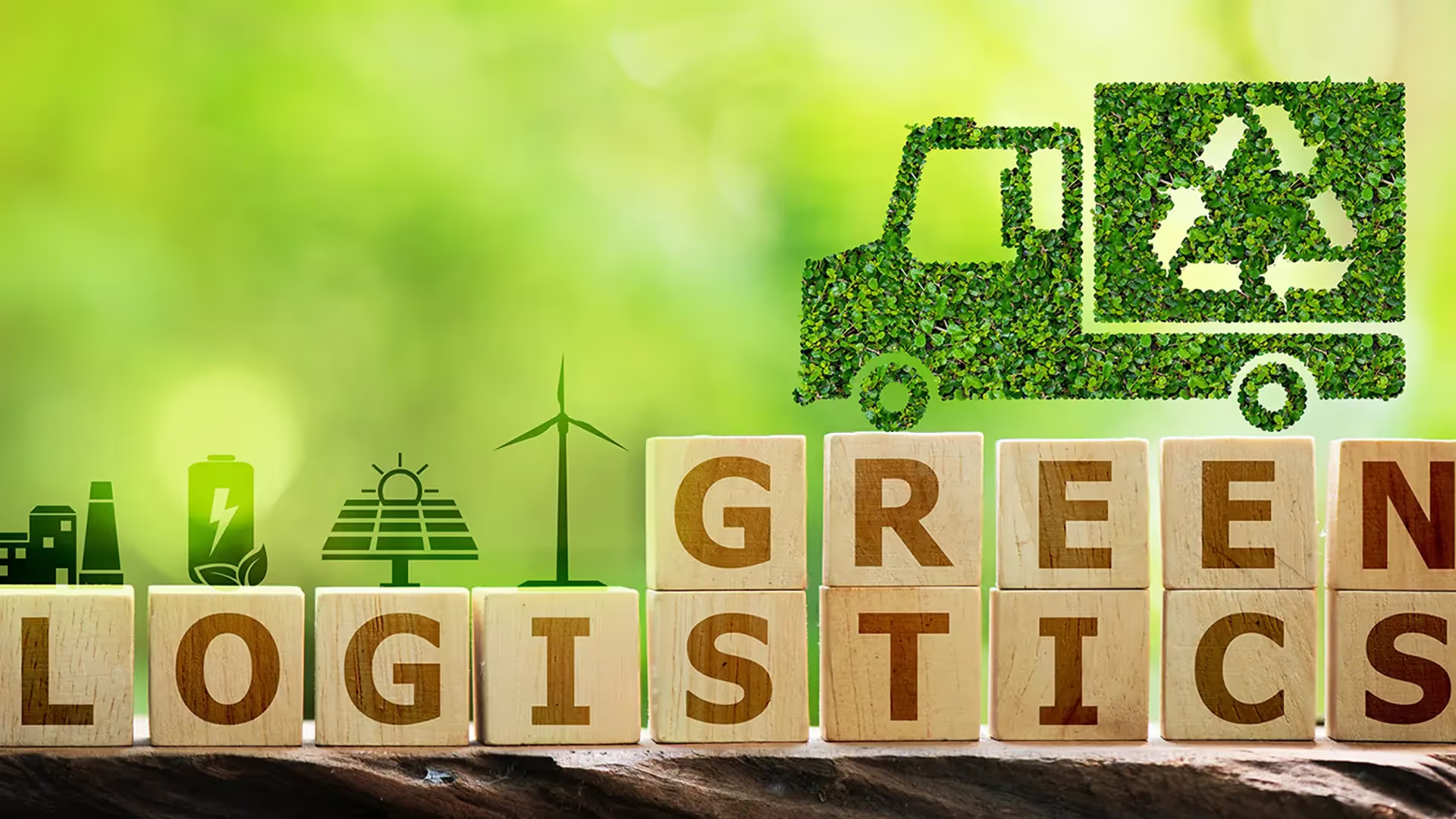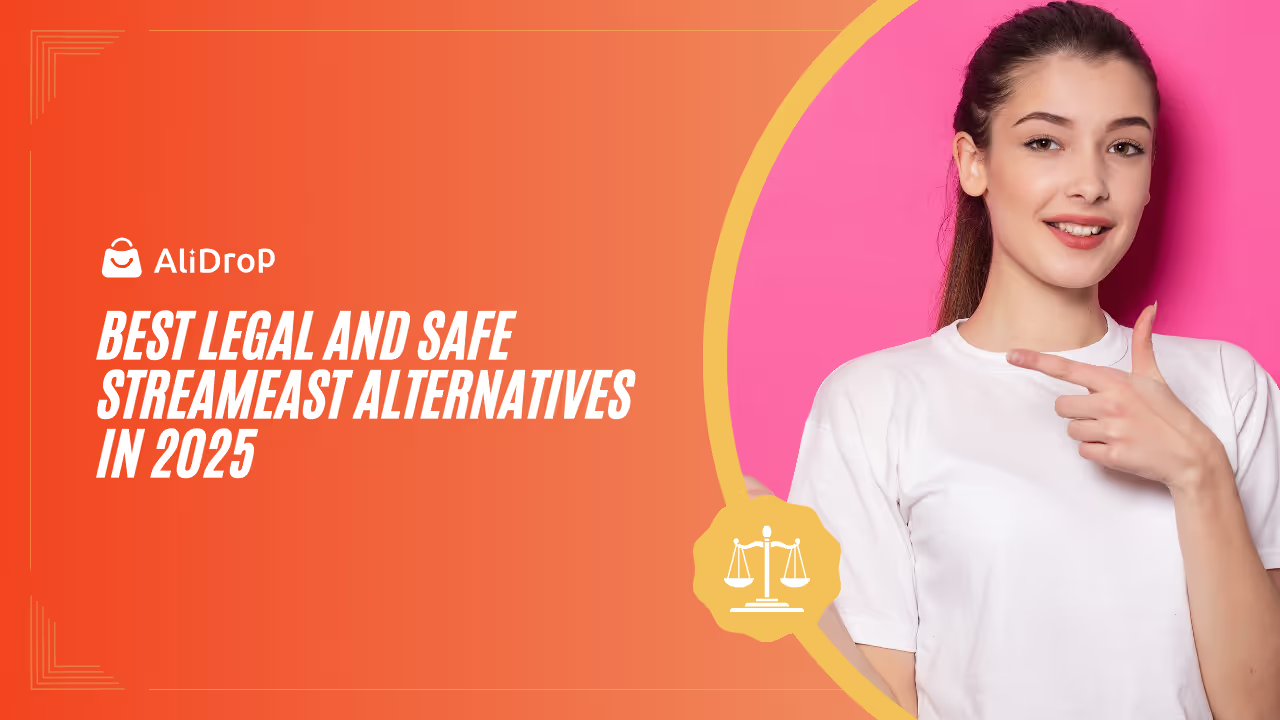What’s the real impact of every package delivered, every shipment sent, every mile a truck travels? While convenience and speed shape modern supply chains, there’s a less-visible footprint left behind—one that lingers long after the goods arrive. “Green logistics” is changing that. No longer just a buzzword, it’s now a call to action for supply chain leaders, brands, and customers worldwide.

Imagine logistics where waste is minimal, emissions shrink, and every decision puts the planet first. This isn’t about sacrificing efficiency or profit. It’s about shaping logistics that work smarter, not harder—balancing today’s business needs with tomorrow’s environmental priorities. Ready to see how green logistics turns good intentions into measurable, planet-positive action? Let’s break it down.
What is Green Logistics?
Green logistics means rethinking the movement, storage, and flow of goods with environmental health as a core priority. It goes beyond reducing carbon emissions—it looks at the entire lifecycle of logistics operations, from packaging and transportation to warehousing and last-mile delivery. The core goal? Minimize the environmental impact at every stage of the supply chain while still meeting customer needs and business objectives.
What sets green logistics apart from traditional models is its focus on measurable, sustainable change. Companies pursuing green logistics invest in cleaner transportation methods, energy-saving technologies, and innovative waste management. Whether it’s switching to electric delivery vehicles, using biodegradable packaging, or optimizing delivery routes to use less fuel, each step adds up. In supply chain management, green logistics isn’t a one-time fix; it’s a mindset shift that requires commitment, creativity, and collaboration—turning logistics into a driver of both business growth and planetary health.
Green Logistics Examples
Here are popular green logistics examples:
Eco-Friendly Packaging
Eco-friendly packaging has quickly moved from trend to necessity. Brands are choosing materials that break down naturally—think cornstarch-based packing peanuts or recycled cardboard over single-use plastics. This shift doesn’t just cut landfill waste; it appeals to environmentally aware consumers who scrutinize packaging choices before hitting “buy.” In green logistics, packaging is reengineered to use fewer resources, reduce weight (which lowers transportation emissions), and make recycling or composting simple for end-users.
Electric Vehicle Fleets
Electric vehicle fleets are driving major change in green logistics, especially for last-mile deliveries in urban areas. Swapping diesel trucks for electric vans or bikes drastically cuts air pollution and greenhouse gas emissions—right where it matters most. UPS and FedEx have invested in electric delivery vehicles, shrinking their carbon footprints without missing a beat on reliability or speed.
Reverse Logistics
Reverse logistics flips the script, treating returns, repairs, and recycling as valuable flows instead of cost drains. Think of retailers with robust systems for taking back products—whether it’s electronics for safe recycling or fashion brands running clothing collection drives. By designing reverse logistics into their supply chains, companies recover value from used goods and prevent tons of waste from ending up in landfills.
Sustainable Warehousing
Warehouses are going green from the ground up. Solar panels now power lights and conveyor belts. Skylights and energy-efficient LEDs cut electricity use. Smart climate controls keep inventory safe while shrinking utility bills. Even rainwater harvesting and low-flow fixtures are in the mix. Logistics leaders in the UK and Europe—think DHL or Tesco—have built “eco-warehouses” that set new standards for environmental stewardship.
Collaborative Distribution
Collaborative distribution pools shipments from multiple companies heading to the same destination, cutting unnecessary trips and maximizing truck space. Instead of competing fleets running half-empty, retailers and suppliers team up to share resources. This model slashes fuel use and road congestion, especially in densely populated regions like Europe.
Rail and Intermodal Transport
Switching freight from road to rail or combining multiple modes—like ships, trains, and trucks—makes a big dent in supply chain emissions. Rail is far more energy-efficient per ton-mile than road transport, making it a cornerstone of green logistics in the USA, China, and Ukraine. Intermodal systems help companies optimize long-haul routes, keeping trucks for the “first and last mile” only.
Importance of Green Logistics
Why does green logistics matter now more than ever? Traditional logistics operations account for a sizable share of global emissions, with trucks, ships, and planes burning fossil fuels every day. As climate concerns move front and center for governments, businesses, and customers, ignoring the impact of logistics is no longer an option. Green logistics responds to growing regulations, shifting customer values, and urgent climate goals—all while maintaining reliable supply chains.
The importance runs deeper than compliance or public image. Green logistics in supply chain management builds business resilience, future-proofs operations, and opens up new market opportunities. Companies that invest in sustainable logistics are less vulnerable to fuel price swings and regulatory crackdowns. They also attract environmentally conscious partners and customers. Whether it’s reducing waste, shrinking carbon footprints, or finding new efficiencies, green logistics sets up businesses to thrive while protecting the environment for generations to come. You should also watch out for inbound vs outbound green logistics here.
Best Green Logistics Practices
Here are the best green logistics practices for organizations:
Route Optimization
Route optimization is the art and science of getting goods from A to B using the least fuel and time possible. Smart route planning tools analyze traffic, weather, and delivery schedules to find the most efficient paths. This cuts down miles driven, saves fuel, and slashes emissions.
Load Consolidation
Load consolidation means filling every truck, container, or pallet to its maximum capacity, instead of shipping half-empty loads. This simple strategy drastically reduces the number of trips required and makes better use of available resources.
Alternative Fuels
Switching to alternative fuels—like biodiesel, natural gas, or hydrogen—takes the pressure off fossil fuels. These cleaner energy sources can power trucks, ships, and even planes, cutting emissions at the source.
Carbon Tracking
You can’t reduce what you don’t measure. Carbon tracking tools give companies the data they need to identify, monitor, and reduce emissions across the supply chain. Automated platforms track emissions by mode, shipment, and route, giving teams real-time insight and accountability.
Supplier Engagement
True green logistics isn’t just about what your company does—it’s about the entire supply network. Engaging suppliers on sustainability standards, packaging materials, and transportation methods extends the impact well beyond your warehouse walls.
Waste Reduction
Waste reduction turns “less is more” into a logistics mantra. Whether it’s optimizing inventory to avoid spoilage, switching to reusable pallets, or digitizing paperwork, every step counts.
Data-Driven Decision Making
Big data and analytics are rewriting the rules for green logistics. By tracking everything from vehicle performance to warehouse energy use, companies spot patterns and act quickly. Data-driven logistics teams respond to problems before they grow, turning raw information into smarter, faster decisions.
Benefits of Green Logistics
Adopting green logistics isn’t just about checking the “sustainability” box—it unlocks real-world advantages for companies and communities. Here are the benefits of green logistics:
- Lower Costs: Optimized routes, fuller loads, and energy savings mean real savings for businesses.
- Better Compliance: Staying ahead of environmental regulations protects against fines and disruptions.
- Brand Value: Customers are drawn to companies with visible environmental commitments.
- Operational Efficiency: Streamlined processes reduce waste and increase reliability.
- Risk Management: Sustainable logistics shields companies from fuel price volatility and resource shortages.
- Stronger Supplier Relationships: Shared green standards build trust and long-term partnerships.
- Talent Attraction: Environmentally conscious teams are more likely to join—and stay with—green-minded employers.
For supply chains in regions like the UAE, China, and Europe, the benefits of green logistics stretch from boardrooms to loading docks. It’s a win-win—balancing economic success with a lighter environmental touch.
Green Logistics Strategies
Some popular green logistics strategies are:
Network Redesign
Network redesign starts by rethinking the layout and locations of warehouses, distribution centers, and transport hubs. Rather than relying on outdated networks, companies analyze demand patterns, regional regulations, and transport costs to build smarter, more sustainable systems.
Decarbonizing Transportation
Decarbonizing transportation means moving away from fossil fuels by investing in electric vehicles, biofuels, and low-emission shipping options. It also includes choosing greener transport modes—shifting freight from trucks to trains or ships when possible.
Energy-Efficient Warehousing
Energy-efficient warehousing turns every square foot into a sustainability asset. Solar panels, LED lighting, and efficient HVAC systems lower energy use, while automation boosts productivity without raising emissions.
Circular Supply Chains
Circular supply chains are built on the principle of keeping resources in play as long as possible. Instead of the traditional take-make-dispose approach, circular logistics reclaims, refurbishes, or recycles goods at every turn.
Collaborative Logistics
Collaborative logistics brings together competitors and partners to share transport assets and facilities, maximizing efficiency and reducing environmental impact.
Policy Compliance
Staying ahead of local, national, and global environmental regulations is non-negotiable in green logistics. Supply chains must monitor and adjust to changing rules—whether it’s emissions caps in Europe, packaging bans in India, or fuel standards in the USA.
Technology Adoption
The right tech turns sustainability from vision into reality. IoT sensors, AI-powered route planners, blockchain for traceability, and real-time tracking systems all enable smarter, cleaner logistics.
How to Implement Green Logistics
Here is how you can implement green logistics into your business workflow:
Assessment and Benchmarking
Implementation starts with a clear-eyed assessment of current operations. Benchmarking emissions, waste, and resource use provides a baseline to measure progress.
Stakeholder Buy-in
Building a green logistics culture requires buy-in from everyone—executives, staff, suppliers, and customers. Clear communication about sustainability goals and their business value inspires engagement and accountability.
Investing in Technology
Digital tools and automation accelerate green logistics implementation. This includes route optimization software, electric vehicle charging infrastructure, and advanced warehouse management systems.
Training and Development
Teams need up-to-date knowledge and skills to drive sustainability. Ongoing training keeps staff aware of best practices, regulatory shifts, and new tech.
Monitoring Progress
Setting targets is just the beginning. Regular tracking and transparent reporting are essential to keep green logistics on course.
Pilot Projects
Testing new approaches on a small scale helps identify challenges and fine-tune strategies before going all-in. Pilot projects—like electric delivery trials or new packaging materials—let companies see real results and build confidence among stakeholders.
Continuous Improvement
Sustainability is a journey, not a finish line. Continuous improvement keeps green logistics programs fresh and ambitious.
Green Logistics Challenges
Every supply chain faces speedbumps on the road to green logistics. The path is rewarding, but not without obstacles. Here are common green logistics challenges:
- High Upfront Investment: Transitioning to eco-friendly vehicles, infrastructure, and packaging can require substantial capital, especially for small businesses.
- Complex Supplier Networks: Coordinating sustainability standards across multiple suppliers—sometimes in different countries—slows adoption and adds administrative complexity.
- Lack of Data: Without robust tracking, it’s tough to identify the biggest opportunities for improvement or report real progress.
- Regulatory Patchwork: Different regions enforce unique environmental regulations, making global compliance a moving target.
- Limited Alternative Fuels: Availability of biofuels, hydrogen, or charging stations is uneven, particularly in developing markets or rural areas.
- Resistance to Change: Internal pushback, lack of buy-in, or limited training can stall even the best-planned green logistics initiatives.
- Uncertain ROI: Proving the financial benefits of green logistics—especially in the early phases—can challenge budget-holders and decision-makers.
Reasons to Switch to Green Logistics Now and Not Later
Delaying green logistics means missing out on business advantages and risking penalties as new laws tighten. As carbon regulations become the norm, companies that act early will lock in savings and resilience. Supply chains that drag their feet often scramble to adapt—while leaders win contracts, customer loyalty, and media attention. The market is shifting: more buyers demand proof of environmental responsibility, and logistics providers that wait too long risk being left behind.
Every year, new environmental standards and incentives reshape logistics in the USA, UK, Europe, India, and beyond. Early movers enjoy tax credits, improved relationships with conscious consumers, and smoother adaptation to upcoming rules. The longer companies delay, the more expensive and complicated their transition becomes. The message is clear: starting now keeps costs manageable and positions your business for long-term success in a changing world.
Rising Regulatory Pressures
Global and local governments are raising the bar for supply chain emissions, waste, and reporting. Compliance isn’t optional—and fines for violations are rising fast.
Consumer Expectations
Today’s buyers look beyond price and delivery speed; they want sustainability in every order. Brands that show a clear commitment to green logistics attract loyalty, referrals, and customer trust.
Long-Term Savings
Efficient routes, optimized loads, and renewable energy investments pay off as fuel and raw material costs climb. Companies making the shift now benefit from years of lower operating expenses.
Brand Reputation
Strong green logistics programs become a visible badge of honor, boosting public perception and trust. Media, investors, and talent all pay attention to environmental performance.
Global Climate Goals
Many countries have signed onto strict climate targets, requiring industry-wide cuts in emissions. Aligning with these goals now ensures businesses stay relevant and contribute to a healthier planet.
The Cost of Green Logistics
Green logistics may require up-front spending, but the real story lies in value gained, not just dollars spent. Here’s where expenses and savings stack up:
- Infrastructure Investments: Switching to solar-powered warehouses, electric vehicles, or new IT systems means higher initial costs, balanced by lower utility bills and maintenance.
- Training and Education: Teams must learn new protocols and systems, requiring investment in workshops, certifications, or ongoing courses.
- Supply Chain Upgrades: Sourcing sustainable materials or qualifying new vendors can push costs higher until economies of scale kick in.
- Data and Reporting: Accurate carbon tracking and compliance reporting require advanced systems and expertise, adding to operational budgets.
- Certification Fees: Achieving recognized green standards or certifications often carries direct costs, from audits to application fees.
- Maintenance and Repairs: Early-stage electric vehicles or new tech can mean steeper maintenance bills until teams and vendors gain experience.
AI Tools for Green Logistics
AI is reshaping green logistics by making supply chains smarter, cleaner, and more responsive. Machine learning algorithms now sift through traffic data, weather, and delivery schedules to fine-tune routes, saving fuel and time. Smart sensors in vehicles and warehouses deliver real-time insights, flagging inefficiencies and suggesting optimizations on the fly.
Advanced analytics also help companies predict and prevent disruptions—like supply chain delays, equipment failures, or spikes in demand—reducing waste and resource use. With AI, logistics teams can focus less on firefighting and more on long-term sustainability.
- AI-Powered Route Planning: Reduces miles and emissions by dynamically mapping the best routes for every delivery.
- Inventory Optimization: Prevents overstock and spoilage, ensuring resources aren’t wasted.
- Predictive Maintenance: Flags potential equipment breakdowns before they cause excess energy use or delays.
- Carbon Tracking Automation: Automatically calculates and records emissions data for accurate reporting and compliance.
- Warehouse Energy Management: Uses sensors to cut lighting, heating, and cooling when spaces are empty.
- Smart Fleet Scheduling: Matches vehicle capacity and driver availability for maximum efficiency.
- Supplier Risk Monitoring: Analyzes supplier performance and flags sustainability risks across the chain.
Mistakes and Risks to Avoid in Green Logistics
Rushing into green logistics without a plan can backfire. Avoid these common missteps:
- Neglecting Data: Failing to gather and analyze emissions or resource use makes it impossible to measure progress or correct course.
- Overlooking Supplier Practices: Greenwashing only your operations ignores upstream impacts; audit supplier sustainability, too.
- Ignoring Employee Training: Skipping training leads to low buy-in and costly mistakes.
- Inconsistent Communication: Unclear sustainability goals confuse teams, partners, and customers.
- Underestimating Costs: Budgeting only for direct expenses misses the true investment required—like training and maintenance.
- Short-Term Focus: Expecting instant ROI can derail long-term success; green logistics is a journey, not a quick fix.
- Siloed Implementation: Changes limited to one department rarely scale; build cross-functional teams from the start.
- Poor Compliance Tracking: Missing or incomplete compliance data risks legal trouble and public backlash.
- Lack of Continuous Improvement: Settling for “good enough” stalls progress and leaves better opportunities untapped.
Conclusion
Green logistics is no longer a future option—it’s the way forward for supply chains worldwide. Whether you’re in the UK, USA, India, China, Europe, Ukraine, or the UAE, embracing green logistics drives environmental progress, customer loyalty, and long-term value.
By making thoughtful changes to every step—from packaging to delivery to reporting—companies shape a cleaner, more responsible future. The supply chains that thrive will be the ones that put green logistics at the heart of every decision, proving that sustainability and business success truly go hand in hand.
Green Logistics FAQs
What is green logistics in supply chain management?
Green logistics in supply chain management focuses on reducing the environmental impact of all logistics activities—from sourcing materials and packaging to transportation and warehousing. This approach seeks to shrink carbon footprints, cut waste, and optimize energy use, all while keeping supply chains reliable and cost-efficient. It’s a vital part of building future-ready businesses.
How is green logistics in India different from green logistics in Europe or the UK?
Green logistics in India often prioritizes reducing air pollution, optimizing truck loads, and improving last-mile connectivity, while Europe and the UK focus on strict emissions targets, alternative fuels, and advanced carbon tracking. Both share the same goal—more sustainable logistics—but local policies, infrastructure, and challenges shape each region’s strategies.
What are some real-world green logistics examples?
Green logistics examples include using electric delivery vehicles, eco-friendly packaging, reverse logistics for returns and recycling, energy-efficient warehouses, and shared transportation networks. Leading brands worldwide—from China to the USA—use these practices to cut emissions and waste while keeping supply chains reliable.
What are the main benefits of adopting green logistics?
The benefits of green logistics include lower operating costs, better regulatory compliance, improved brand reputation, stronger supplier relationships, and increased loyalty from customers who value sustainability. Companies also gain resilience against resource shortages and price swings—helping them adapt to changing global markets.























